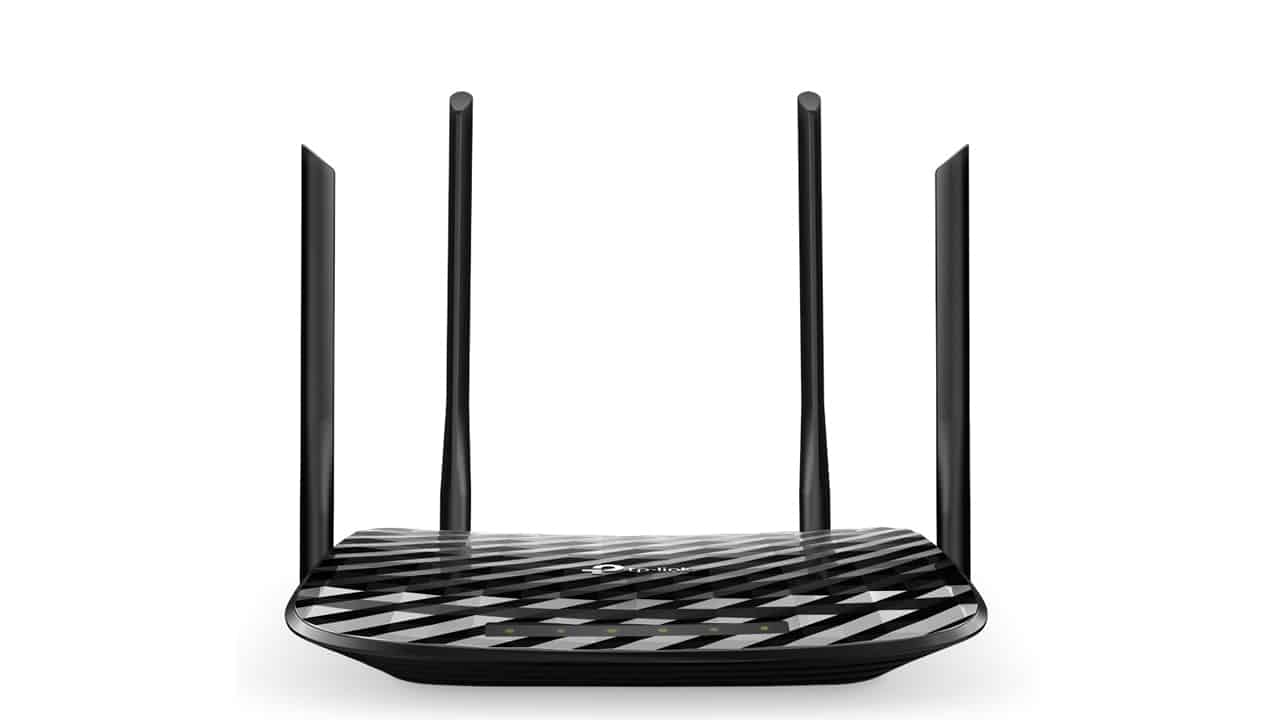Table of Contents
amazon TP-Link Archer A6 reviews
TP-Link Archer A6 is a dual-band router designed for budget users. Despite its affordable price, it offers features on more expensive routers, such as support for MU-MIMO data streaming and four gigabit LAN ports. That said, while its 5GHz performance is solid, it leaves a bit to be desired on the 2.4GHz band. It also lacks USB connectivity and the built-in malware protection you get with the pricier Asus RT-AC66U B1, our top pick for budget routers.
Design and Features
The Archer A6 uses a textured glossy black housing that measures 1.4 x 9.1 x 5.7 inches (HWD) and features four non-removable antennas. LEDs along the top front edge indicate power status, radio band, Ethernet, Internet, and WPS (Wi-Fi Protected Setup).
The back panel houses the Reset, Power, and WPS buttons and four gigabit LAN ports, one WAN port, and the power jack. The lack of USB ports that you get with the Asus RT-AC66U B1.
Archer A6 is a 2×2 AC1200 Router powered by a 750MHz SoC processor. It can reach a maximum data rate of up to 300Mbps on the 2.4GHz band and 867Mbps on the 5GHz band. This Router uses 802.11ac Wave 2 technology and supports MU-MIMO (simultaneous data transmission) and beamforming (direct signal transmission to the client) but does not support automatic band control. You can use the TP-Link Tether mobile app to access basic wireless and security settings, turn parental controls on or off, run basic diagnostics, and configure guest networks. Still, you must use a web portal to access advanced settings.
The web portal opens to a network map showing the number of wired and wireless clients and your internet status. At the top are the Quick Settings, Basic, and Advanced tabs, and on the left is the settings menu. The Basic Menu includes Internet, Wireless, Parental Controls, Guest Network, and TP-Link Cloud settings. Parental controls allow you to create profiles for family members to block access to certain websites using keywords, set internet time limits and view all websites visited. TP-Link Cloud allows you to manage your network and client devices from anywhere via the internet, and the guest network allows you to create a private network with separate SSID and password for guests.
Advanced settings also include Internet, Wireless, Parental Controls, Guest Network settings, Quality of Service (QoS), Security, NAT Forwarding, IPv6, and VPN Server settings. The QoS settings let you set upload and download bandwidth limits but lack the application-specific presets you get with the Trend Micro-enabled Asus RT-AC66U B1. Archer A6 provides System Tools that allow you to update firmware, backup and restore system settings, automatic schedule reboots, view system logs, and view network traffic statistics. It also allows you to switch between Router mode, where the device acts as your primary Router, and Access Point mode, where it will act as an extender to an existing network.
Mixed performance
I had my A6 up and running in minutes. I connected the router to my modem, and my desktop started it and typed 192.168.0.1 in my browser’s address bar, taking me to the Quick Settings screen. I created an admin password, set my time zone, and used Autodiscover to select my internet connection type (DHCP). I used the default SSID name and password, clicked Next to save my settings, and completed the installation.
The Archer A6 gave mixed results in our transfer speed performance tests. Its score of 68Mbps on the 2.4GHz proximity test (same room) is slower than the D-Link DIR-867, TP-Link Archer A7, and Asus RT-AC66U B1. Similarly, its 39Mbps score on the 30-foot test passed the pack.
Performance on the 5GHz band is much better. The Archer A6 hit 530Mbps in the proximity test, faster than the TP-Link Archer A7 but slightly slower than the D-Link DIR-867 and Asus RT-AC66U B1. In the 30-foot test, the Archer A6 hit 204Mbps, beating both the Archer A7 and the D-Link DIR-867, but not the Asus RT-AC66U B1.
If you need an affordable Wi-Fi router for your dorm room, apartment, or small house, TP-Link Archer A6 is worth a look. You won’t get a blazing 2.4GHz transfer rate, but its solid 5GHz performance in our testing meant it shouldn’t have a hard time handling video and gaming demands games online. The web control panel offers plenty of management options, including parental controls and QoS settings, but lacks malware protection.

